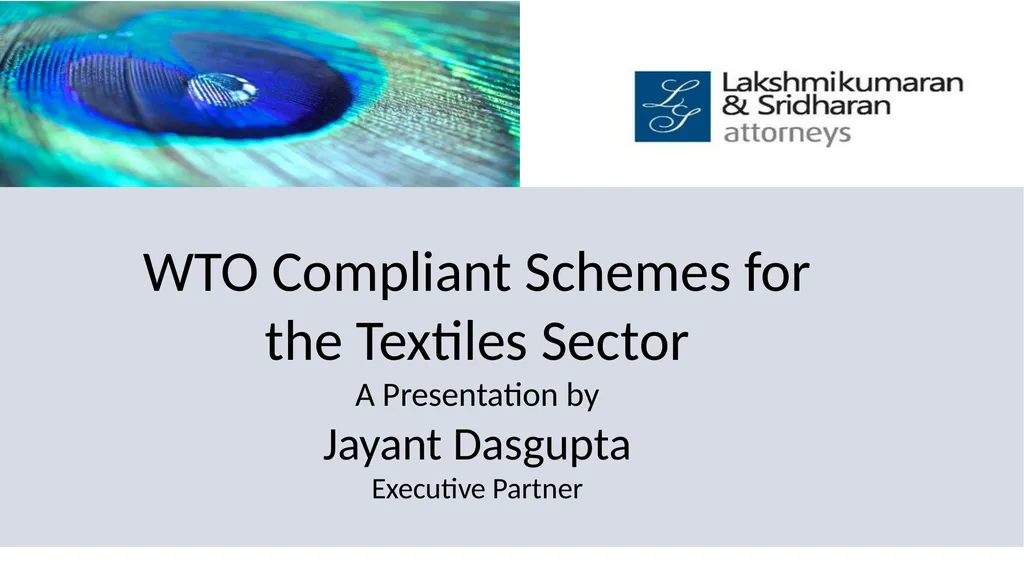
WTO Compliant Schemes for the Textiles Sector A
Author: luanne-stotts | Published: 2025-05-24
Description: WTO Compliant Schemes for the Textiles Sector A Presentation by Jayant Dasgupta Executive Partner WTO Definition of Subsidies Financial contribution by the government or any public body Direct or potential direct transfer of funds
Download Presentation
Download the PPT/PDF: Download
Transcript:
Loading transcript…